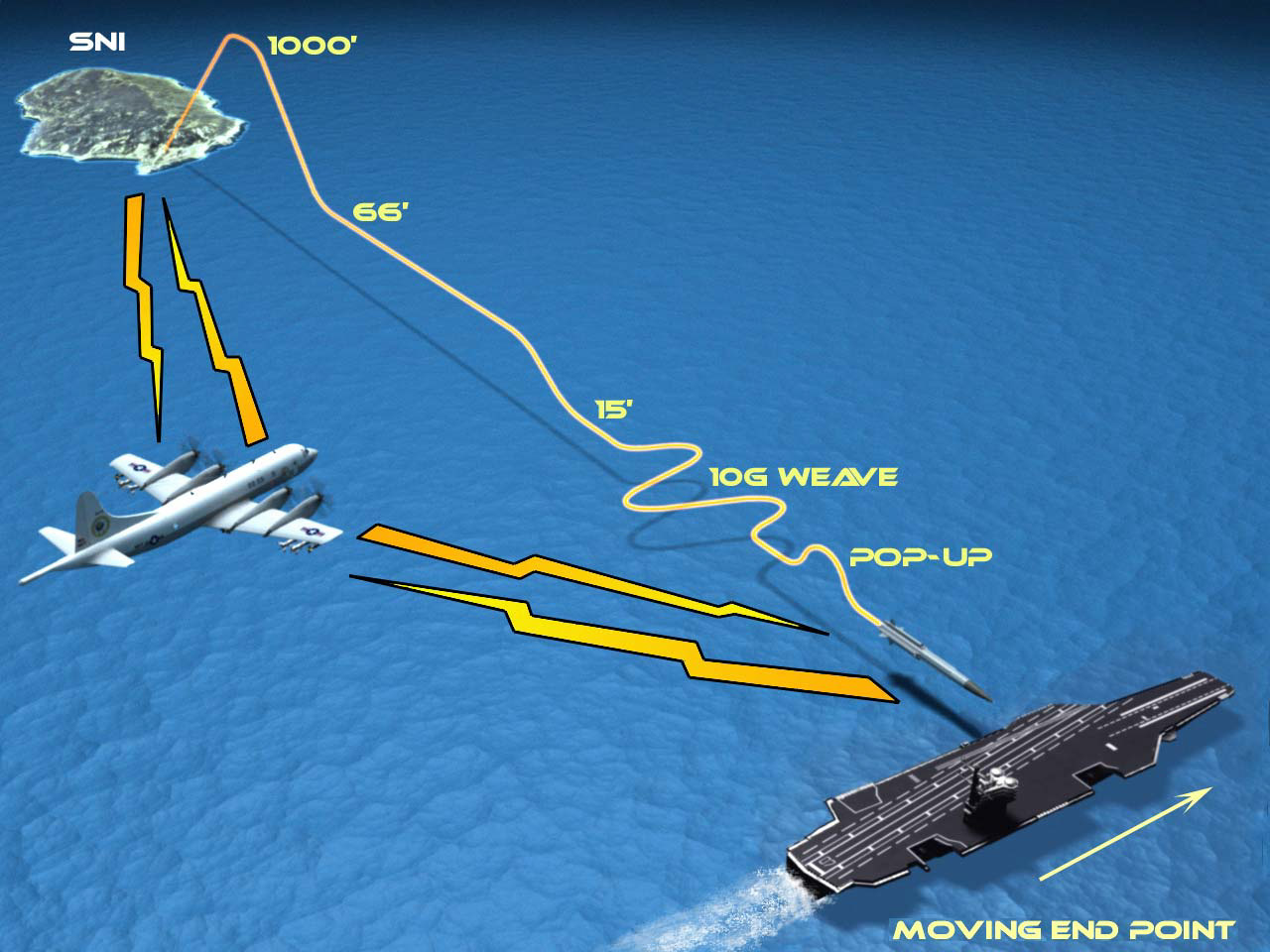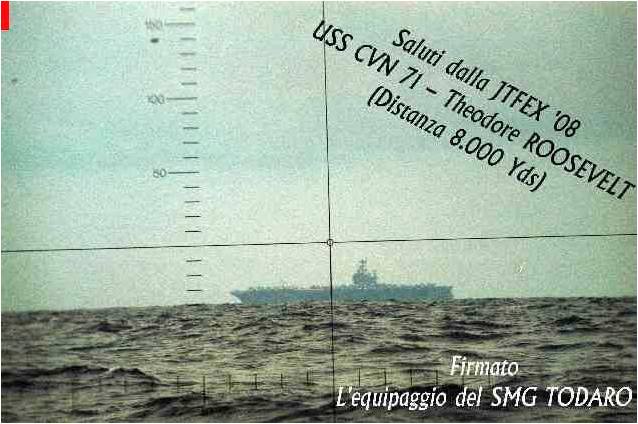Question for Austin... what is this?

There are thousands of things Russia can pick a fight with the west over, the point is that there is risk involved in every fight and the potential for real disaster. This is not a friendly poker game amongst friends for 1 dollar a round, this is serious poker between people who really don't actually care whether the other players die or not where the stakes can range from meat export tariffs through to regime change.
At the end of the day a small maintainence port in the med is not worth a serious fight over. It is worth moving ships into the med... they will be useful in case an evacuation of Russian citizens is needed, but actually firing on western ships is not in Russias interests, so carrier there or not is not actually that critical... the Russians wont risk a whole lot to save Assad... remember he was sucking up to the west when the west turned on him... it is their reaction that has driven him to Russia.
Russia does not need to build up a navy to take on the west... it will cost an enormous amount of money and what is the gain? Just like during the cold war if both sides have nukes... and they do then there is not much chance of a decisive victory either way.
The only benefit from a powerful navy is ego and that cost will cripple the Russian economy the way it is currently hurting the US economy. The difference is that the US uses its military and political and economic power to maintain its position so it makes more sense for them to invest in a brute squad.
Don't get me wrong... I support Russian carriers and think a blue water navy is more useful than none at all... having airpower is a force multiplier and makes a group of ships vastly more capable than if it did not have airborne early warning and air support.
Of course the Russians are smarter than both of us and have offered the US a carrot that the US loves... control of Syrian government chem weapons... the powerful always crave control of things that can hurt them or change their position of power. For the Syrian government it is giving up nothing because chem weapons are no use in this sort of conflict and even if they don't get them back they can always make more later, but if they give them up and get a guarantee that the US wont attack then it will be very much like the cuban missile crisis... the syrians get a guarantee of no attack and get rid of weapons that they could never really use and hope to survive using, the US gets the weapons they don't like removed and don't have to worry about damage control when a Pantsir-S1 shoots down an F-22...

Ok some guys in defencetalk forum put some points :
# U.S navy is training to face russian navy cruise missiles
Have you even looked at the design of this "American" missile?
It is basically a Kh-31 mounted on the booster rocket for a Standard naval SAM... the full quote of the text you posted had this on the end:
Despite this growing need, the Supersonic Sea Skimming Target (SSST) program moved very slowly in the 1990s, with false starts that included a Boeing-Strela Kh-31 Krypton variant before the decision was made to develop a new SSST. Orbital Sciences won the contract in June 2000, but the BQM-163 suffered a number of program delays before its final developmental test flight eventually took place in in April 2005. The program is now moving forward, slowly, and picking up international customers as well…
The Coyote can carry a payload, but its size and short range make it unsuitable as an actual anti-ship missile. Those same characteristics are just fine as a naval target.
The Coyote was designed and built AFTER the US Navy bought and used Kh-31 missiles under the M-31 program for supersonic anti ship missiles in the mid 1990s.
Now in 2003 a US company gets a contract to design and make almost exactly the same missile mounted on a solid rocket booster from a USN Standard SAM and they get the missile ready by March 2007 for its first contract.
If the US has the balls to call the Kh-35 Harpoonski, then Coyote should be called койот... Koyot as it is actually a direct copy.
They also claims that they don't want many cruise missile like russia because U.S navy has it's airforce navy can take their harpon missiles overseas which is an advantage that doesn't exist in the russian navy so Russia is obliged to make a long range cruise missiles because russian navy airforce has not that ability to carry a middle range cruise missile like U.S navy airforce
So they are saying having a short range low speed anti ship missile that even the most basic 30mm gatling can shoot down that is actually not that cheap (Harpoons actually cost more than Yakhonts) is an advantage?
The problem will be when Redut/Poliment enters service their navy will enjoy the same multiple target capability as their land based Vityaz/S-400 units will enjoy so the NATO forces will require exponentially more missiles to hope to penetrate their defences.
As mentioned one supersonic threat might be able to be dealt with... but when all the missiles inbound are supersonic then there is much less time to engage them.
There is no such thing as a system that can't be overwhelmed... all systems have a limit as to how many missiles they can engage over a period of time... NATO or Russian it doesn't matter.
What matters is that the Russian missiles will be moving two to three times faster making that intercept period much much shorter... so when 20 Harpoons come over the horizon the Russian ships would have rather more time to deal with them than a USN or British Navy or French navy group of ships when 20 Yakhonts come over the horizon at much higher speed.
Can I point out again shooting down a target during training is one thing... British ships in the Falklands were able to shoot down individual artillery shells with their Sea Wolfs and their Sea Darts should have made pretty short work of those Exocets... but they lost quite a few ships.
so the U.S navy airforce will use these missile against russian submarines and frigates that threaten U.S aircraft carrier before that submarine can reach a range to fire on that aircraft carrier , which means that the U.S navy airforce has the upper hand in the future navy conflict . just a point we need to discuss.
That of course assumes the US carrier group is moving at very low speed operating an ASW screen looking for subs... Oniks is believed to have a flight range of over 600km and as far as I know US carrier groups don't operate with ASW helos that can detect Russian subs to that range.
A carrier group in transit at 30knts wouldn't notice any sub surface activity, which means Russian subs like the Oscars could launch their missiles at near max range and then withdraw... any seawolfs or virginias that want to go and hunt those oscars need to realise there might be Akulas and Yasens sitting somewhere silently waiting for them.
For US carriers to be an actual threat that the Russian Navy has to deal with it will be operating near Russian coastal waters... which radically limits where it can be operating and makes finding and dealing with them much much easier.
The near future introduction of hypersonic Zircon and Brahmos II missiles just makes it even more interesting.
Some time ago, I read about potential floating bases for Russia to combat the lack of opperational bases outside norm. Something like a floating platform for moving and acting as some sort of base or centre for navy so that they dont have to continuously go back and forth to resupply the larger ships as often, and there would be transport ships that are responsible for supplying the platform.
Not just theoretical... I remember talk about temporary moorings in international waters in the Med where supply vessels docked and warships docked to get supplies. Troop ships could carry replacement crews so boats could restock and get complete new crews without having to sail all the way back to a Soviet port or friendly port or expensive foreign port.
This is cool. Peter the Great journeyed through arctic ice accompanied by 4 (!!!) nuclear icebreakers.
Nice... Thanks for posting...











